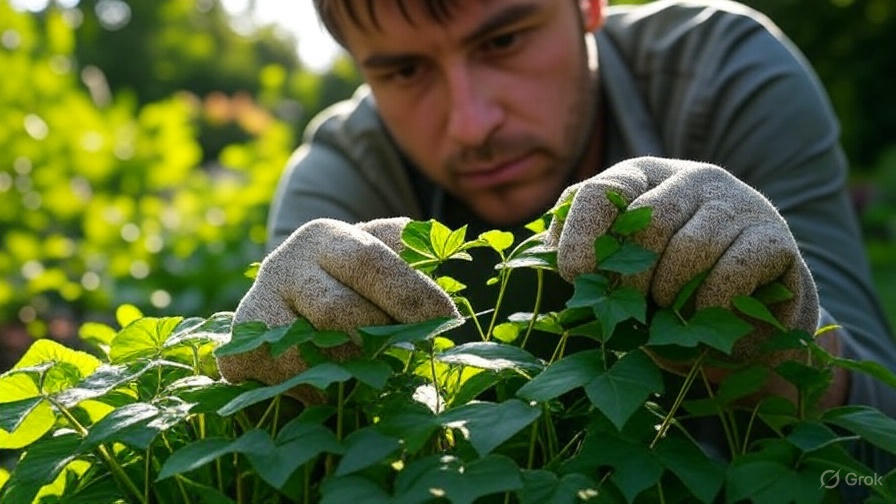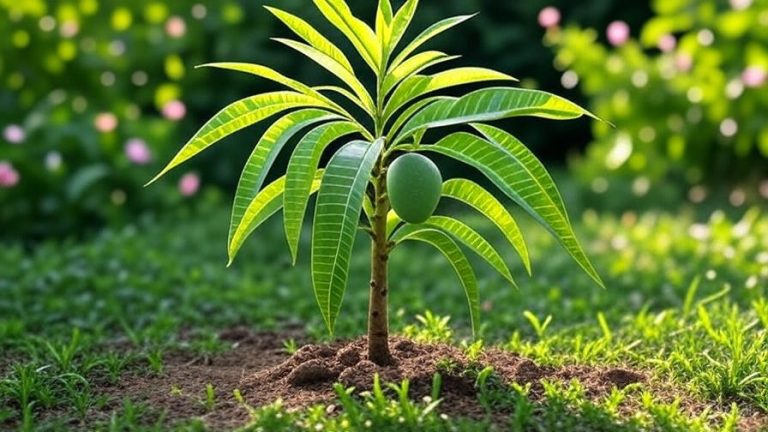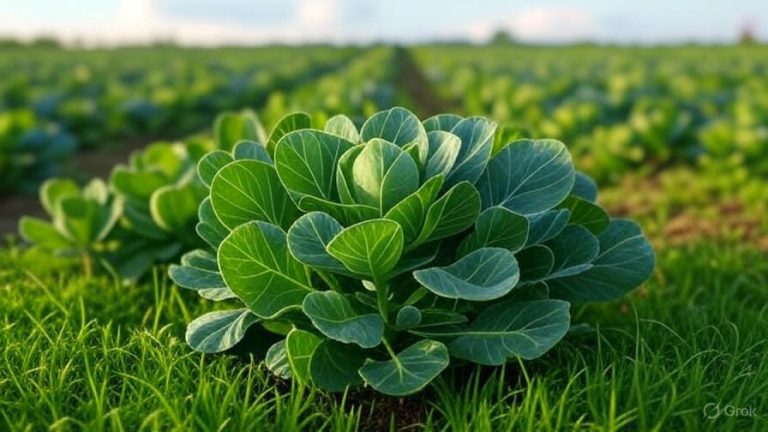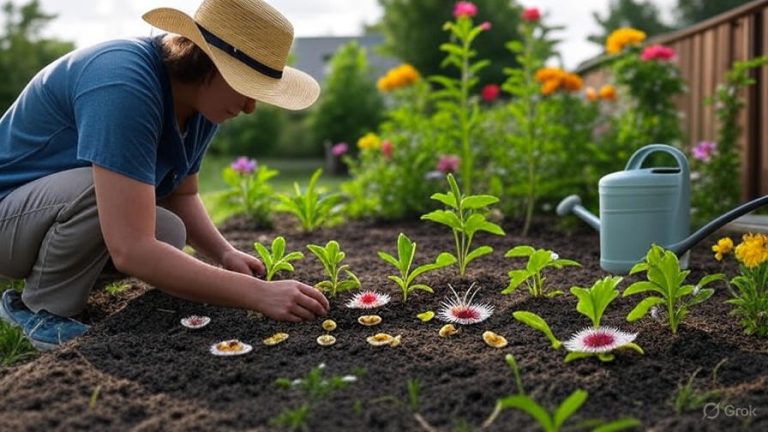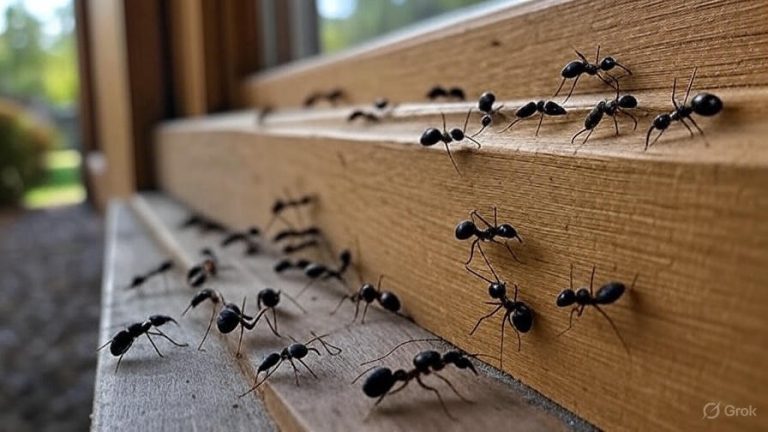How to Kill Poison Ivy?
Poison ivy strikes fear into the hearts of gardeners, hikers, and homeowners across North America. This notorious three-leaved plant causes painful, itchy rashes that can last for weeks. If you’ve spotted those telltale leaves in your yard or garden, you need to act fast before the plant spreads and becomes a bigger problem.
The good news? You can eliminate poison ivy completely with the right approach and tools. This comprehensive guide walks you through proven methods to kill poison ivy safely and prevent it from returning to your property.
Identifying Poison Ivy Before You Begin
Before you start any removal process, you must correctly identify poison ivy. Many harmless plants look similar to poison ivy, and you don’t want to waste time attacking the wrong vegetation.
True poison ivy displays three leaflets per stem, with the middle leaflet slightly larger than the two side leaflets. The leaves have a glossy appearance and can range from bright green in spring to deep red in fall. Young plants often grow close to the ground, while mature poison ivy can climb trees and fences, reaching heights of 50 feet or more.
The plant produces small white berries in late summer and fall. These berries serve as a food source for birds, which spread the seeds through their droppings. This natural dispersal method explains why poison ivy often appears in unexpected locations around your property.
Remember the old saying: “Leaves of three, let it be.” This simple rhyme can save you from painful exposure while you’re surveying your yard for infestations.
Essential Safety Gear for Poison Ivy Removal
Safety comes first when dealing with poison ivy. The plant’s oils can cause severe allergic reactions even when the plant appears dormant in winter. Never attempt poison ivy removal without proper protective equipment.
Start with clothing that covers every inch of exposed skin. Wear long pants, long-sleeved shirts, and closed-toe shoes. Choose old clothes that you can either wash separately or throw away after the job is complete.
Disposable gloves work better than reusable ones for poison ivy removal. Nitrile gloves offer excellent protection and won’t absorb the plant’s oils like latex gloves might. Double up on gloves if you’re particularly sensitive to poison ivy.
Eye protection prevents accidental splashing of herbicides or plant oils into your eyes. Standard safety glasses or goggles provide adequate protection for most removal methods.
A respirator or dust mask becomes essential when you’re cutting or grinding poison ivy stems. The airborne particles can cause respiratory irritation and internal allergic reactions.
Natural Methods to Kill Poison Ivy
Many homeowners prefer natural approaches to eliminate poison ivy, especially when pets and children frequent the area. These eco-friendly methods take longer to work but avoid introducing harsh chemicals into your landscape.
White Vinegar Treatment
White vinegar with high acetic acid content can effectively kill poison ivy leaves and stems. Standard household vinegar contains 5% acetic acid, but horticultural vinegar with 20% acetic acid works much faster.
Spray the vinegar directly onto poison ivy leaves on a sunny day. The combination of acetic acid and sunlight burns the plant’s foliage, causing it to wither and die. You’ll need multiple applications over several weeks to completely eliminate established plants.
This method works best on young poison ivy plants with tender stems. Mature plants with woody stems require more aggressive treatment to reach the root system.
Boiling Water Application
Boiling water provides an immediate and dramatic effect on poison ivy. The extreme heat destroys plant cells instantly, causing visible damage within hours of application.
Pour boiling water slowly over the entire poison ivy plant, focusing on the base and root area. The water must reach the soil to damage the root system effectively. One treatment rarely eliminates established plants, so plan for multiple applications.
This method works exceptionally well for poison ivy growing in driveways, walkways, or other paved areas where you don’t want any vegetation to survive.
Salt and Dish Soap Solution
A mixture of salt, dish soap, and water creates an effective natural herbicide for poison ivy. The salt dehydrates the plant while the soap helps the solution stick to waxy poison ivy leaves.
Mix one cup of salt with one gallon of water and add two tablespoons of liquid dish soap. Spray this solution thoroughly on poison ivy during the hottest part of the day for maximum effectiveness.
Be cautious with salt-based treatments near desirable plants, as salt can damage or kill nearby vegetation and affect soil quality for years.
Chemical Herbicides for Stubborn Poison Ivy
Sometimes natural methods aren’t enough to eliminate persistent poison ivy infestations. Chemical herbicides provide faster, more reliable results for large areas or well-established plants.
Glyphosate-Based Herbicides
Glyphosate remains the most effective chemical for killing poison ivy completely. This systemic herbicide travels through the plant to the roots, ensuring the entire plant dies rather than just the visible portions.
Apply glyphosate herbicide on calm days to prevent drift onto desirable plants. The herbicide needs several hours to absorb into the poison ivy leaves, so avoid application before rain or irrigation.
Glyphosate typically shows results within one to two weeks, with complete plant death occurring within a month. Repeat applications may be necessary for thick, mature poison ivy vines.
Triclopyr Herbicides
Triclopyr works particularly well on woody poison ivy vines that have climbed trees or structures. This herbicide specializes in killing woody plants while causing less damage to grasses than glyphosate.
Brush-on triclopyr applications work best for poison ivy vines growing up trees. Cut the vine near ground level and immediately apply the herbicide to the fresh cut. This method prevents herbicide contact with the tree bark while ensuring the poison ivy root system dies.
2,4-D Herbicides
2,4-D herbicides target broadleaf plants like poison ivy while leaving grasses relatively unharmed. This selectivity makes 2,4-D useful when poison ivy grows in lawn areas.
Apply 2,4-D herbicides during active growing seasons when poison ivy is producing new leaves. The herbicide works by disrupting the plant’s growth hormones, causing twisted, distorted growth before plant death.
Physical Removal Techniques
Physical removal offers immediate results but requires extreme caution and proper safety equipment. This approach works best for small infestations or when you need to clear poison ivy from specific locations quickly.
Hand Pulling Method
Hand pulling works effectively for young poison ivy plants with shallow root systems. Wait for a rainy day when the soil is soft, making root removal easier.
Grasp the poison ivy stem as close to the ground as possible and pull straight up with steady pressure. Try to remove the entire root system in one piece to prevent regrowth from root fragments.
Immediately place pulled poison ivy plants in heavy-duty garbage bags. Never compost poison ivy or leave it lying on the ground, as the oils remain active for years.
Cutting and Treating Stumps
For large poison ivy vines, cutting followed by herbicide treatment prevents regrowth more effectively than pulling alone. Use sharp pruning shears or a saw to cut the vine close to ground level.
Apply herbicide to the fresh cut immediately after cutting. The open wound allows herbicide to penetrate directly into the root system, ensuring complete plant death.
This method works particularly well for poison ivy that has grown up trees or onto structures where pulling isn’t practical.
Smothering Techniques for Large Areas
Smothering techniques work well for extensive poison ivy patches where individual plant treatment isn’t practical. These methods block sunlight and prevent photosynthesis, eventually killing the plants.
Cardboard and Mulch Method
Cover poison ivy areas with large pieces of cardboard, overlapping edges to prevent light penetration. Weight down the cardboard with rocks or bricks to prevent wind displacement.
Add a thick layer of mulch over the cardboard for a more attractive appearance. Leave this barrier in place for at least one full growing season to ensure complete poison ivy death.
This method takes patience but creates usable garden space once the poison ivy dies and decomposes.
Plastic Sheeting Technique
Clear plastic sheeting creates a greenhouse effect that can kill poison ivy through extreme heat. Secure the plastic tightly over the poison ivy area using rocks or stakes.
The plastic traps heat and moisture, creating conditions that eventually kill the plants underneath. This method works fastest during hot summer months when temperatures under the plastic can exceed 120°F.
Remove the plastic after six months to one year, depending on climate conditions and poison ivy density.
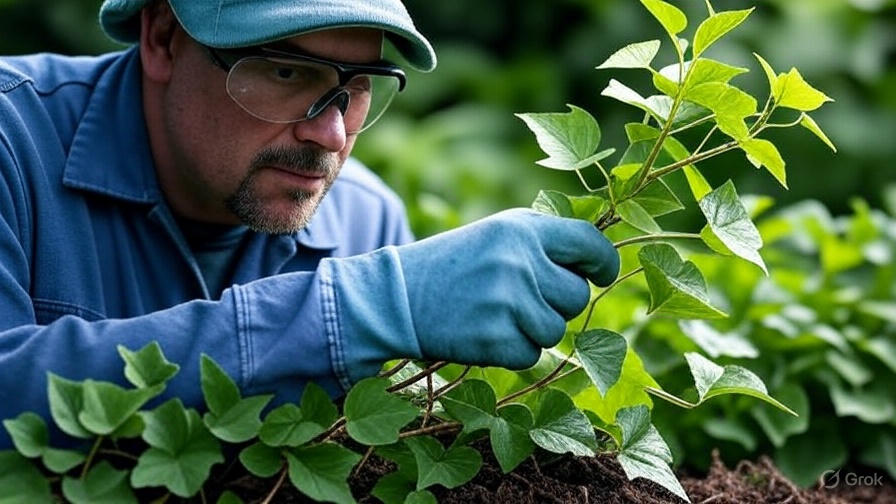
Timing Your Poison Ivy Control Efforts
Timing plays a crucial role in poison ivy control success. Different seasons offer unique advantages for various removal methods.
Spring provides the best opportunity for herbicide applications when poison ivy produces new, tender growth. Young leaves absorb herbicides more readily than mature, waxy leaves.
Early summer offers ideal conditions for physical removal when poison ivy is actively growing but hasn’t yet developed thick, woody stems. The increased plant activity also makes herbicides more effective.
Fall treatments work well because poison ivy transports nutrients to its root system, carrying herbicides along for maximum root kill. However, cooler temperatures slow herbicide effectiveness.
Winter removal focuses on cutting and treating woody vines when leaves are absent and you can see the plant structure clearly. The plant’s oils remain active even in dormant stems, so safety precautions remain essential.
Preventing Poison Ivy Regrowth
Successful poison ivy control requires preventing new infestations after eliminating existing plants. Birds spread poison ivy seeds constantly, so new plants can appear anywhere on your property.
Maintain healthy, thick lawn areas that resist poison ivy establishment. Dense grass competes successfully against poison ivy seedlings for space, water, and nutrients.
Regular property inspections help you catch new poison ivy plants while they’re still small and easy to eliminate. Walk your property monthly during growing season, paying special attention to fence lines, tree bases, and other areas where birds perch.
Create unfavorable conditions for poison ivy growth by improving drainage in wet areas and increasing sunlight in shaded locations. Poison ivy thrives in disturbed soils, so established landscape beds resist invasion better than bare ground.
Dealing with Poison Ivy on Trees
Poison ivy commonly climbs trees, creating challenging removal situations. Never pull poison ivy vines from tree trunks, as this can damage the tree bark and create entry points for diseases and pests.
Cut poison ivy vines at eye level and again near the ground, removing the middle section completely. Treat both cut ends with herbicide to prevent regrowth from either direction.
The upper portion of the vine will die naturally once separated from the root system. Leave these dead vines in place rather than pulling them down and risking exposure to their oils.
Monitor treated areas for new poison ivy growth from seeds or surviving root fragments. Small sprouts are much easier to eliminate than established vines.
Special Considerations for Sensitive Areas
Some locations require extra care during poison ivy removal to protect water sources, wildlife habitats, or valuable plants.
Near water sources, use only mechanical removal or natural herbicides to prevent chemical contamination. Physical barriers like cardboard mulching work well in these sensitive locations.
Around valuable ornamental plants, spot-treat individual poison ivy plants rather than broadcast spraying. Use foam herbicide applicators or brush-on treatments to target specific plants without affecting nearby desirable vegetation.
In areas frequented by pets or children, prioritize natural removal methods and ensure complete cleanup of all plant debris. Even dead poison ivy retains its irritating oils for several years.
Post-Removal Cleanup and Safety
Proper cleanup after poison ivy removal prevents accidental exposure and ensures your efforts remain effective long-term.
Wash all tools with rubbing alcohol or a bleach solution to remove poison ivy oils. Pay special attention to cutting edges, handles, and any surface that contacted the plants.
Dispose of protective clothing carefully. Either wash items separately in hot water with strong detergent or throw them away entirely. Never reuse disposable gloves or masks.
Shower immediately after poison ivy removal using dish soap or specialized poison ivy wash products. These products cut through the plant’s oils better than regular soap.
Clean outdoor surfaces where you worked, including walkways, tools storage areas, and vehicle surfaces. Poison ivy oils can remain active on contaminated surfaces for years.
Long-Term Landscape Management
Successful poison ivy control extends beyond initial removal to long-term landscape management that discourages reinfestation.
Plant native ground covers in areas where poison ivy grew to occupy the space and prevent reestablishment. Dense plantings of desirable species outcompete poison ivy seedlings naturally.
Maintain proper soil fertility and pH levels to favor desired plants over weeds like poison ivy. Most ornamental plants thrive in slightly acidic to neutral soils, while poison ivy tolerates a wide range of soil conditions.
Regular maintenance activities like pruning, weeding, and mulching create an environment that favors cultivated plants while discouraging unwanted vegetation.
Professional Help Options
Sometimes poison ivy infestations exceed what homeowners can safely handle alone. Large areas, mature vines, or repeated treatment failures may require professional intervention.
Licensed landscapers have access to commercial-grade herbicides not available to homeowners. These products often work faster and more effectively than consumer alternatives.
Tree service professionals can safely remove poison ivy from tall trees using specialized equipment and techniques. They can also assess whether poison ivy has caused any structural damage to trees.
Pest control companies often offer poison ivy treatment services as part of their vegetation management programs. These services typically include follow-up treatments and guarantees against regrowth.
Conclusion
Eliminating poison ivy from your property requires patience, proper safety equipment, and the right combination of techniques for your specific situation. Natural methods work well for small infestations and environmentally sensitive areas, while chemical herbicides provide faster results for stubborn or extensive problems.
Success depends on understanding poison ivy’s growth habits, timing your control efforts properly, and preventing reestablishment through good landscape management. With persistence and the right approach, you can reclaim your outdoor spaces from this troublesome plant and enjoy your yard without fear of painful reactions.
Remember that poison ivy serves important ecological functions, providing food for wildlife and preventing soil erosion in natural areas. Focus your control efforts on areas where the plant conflicts with human activities while allowing it to remain in appropriate wild spaces where it belongs.

